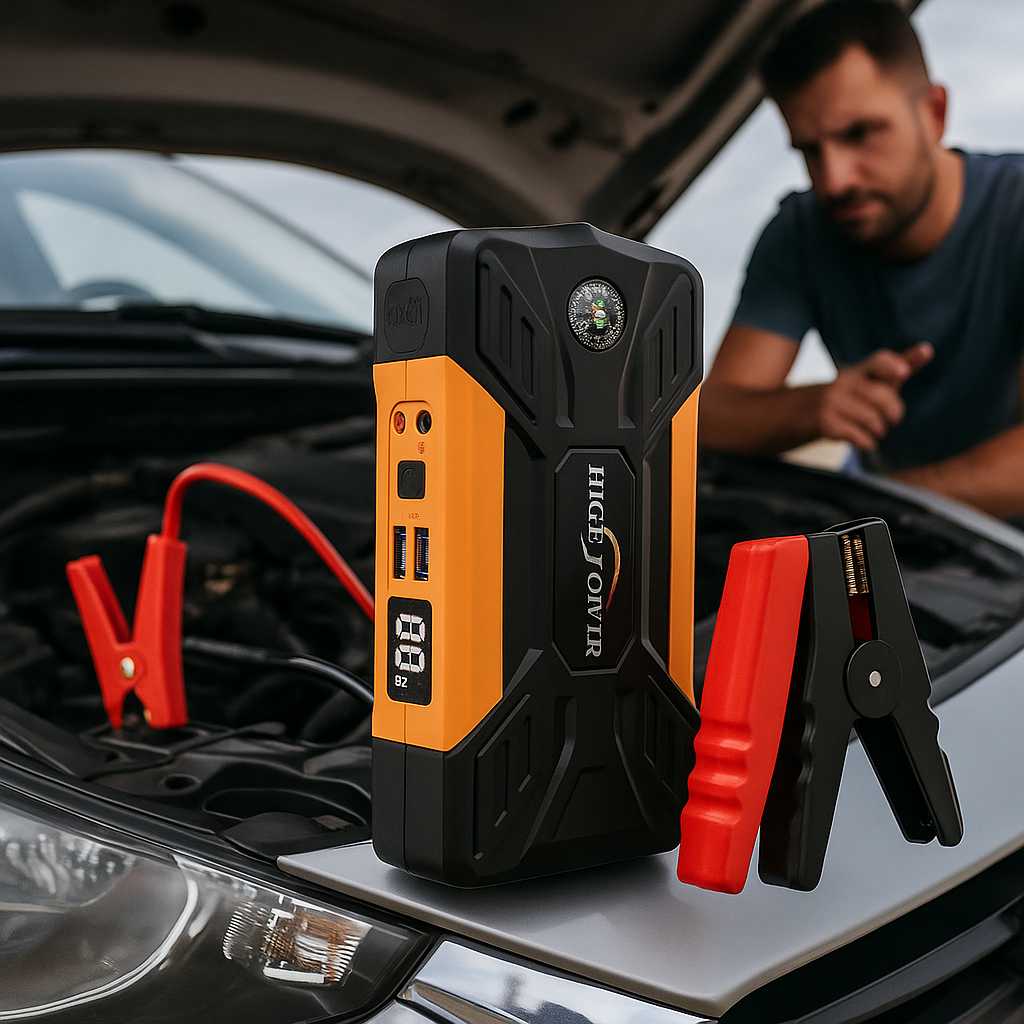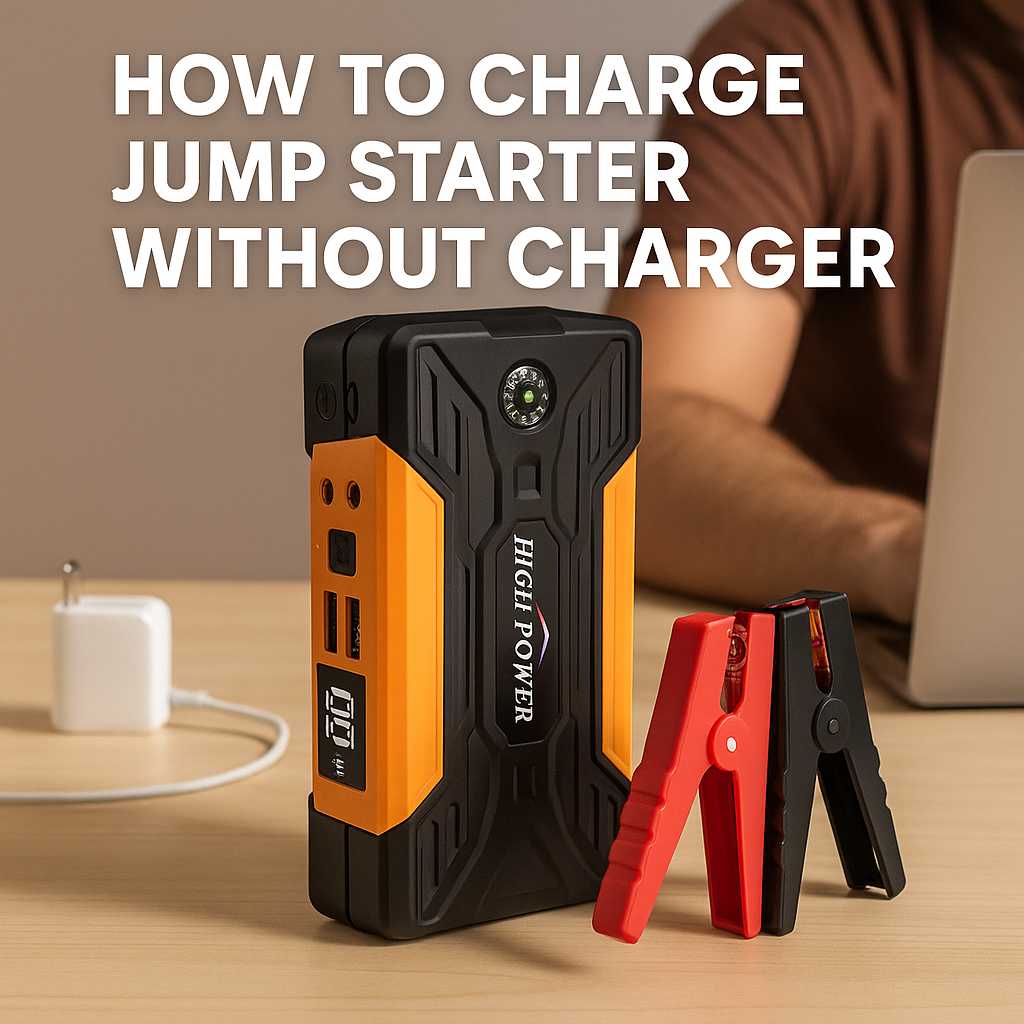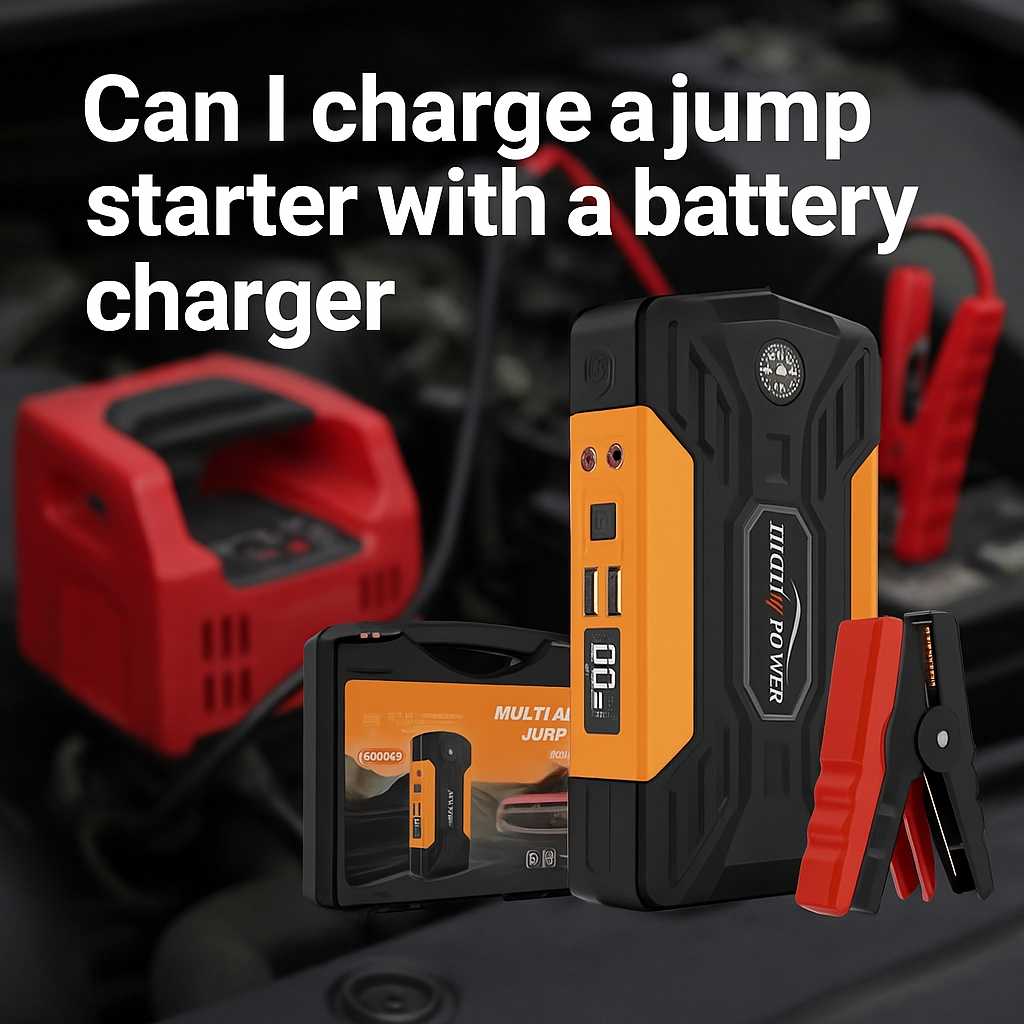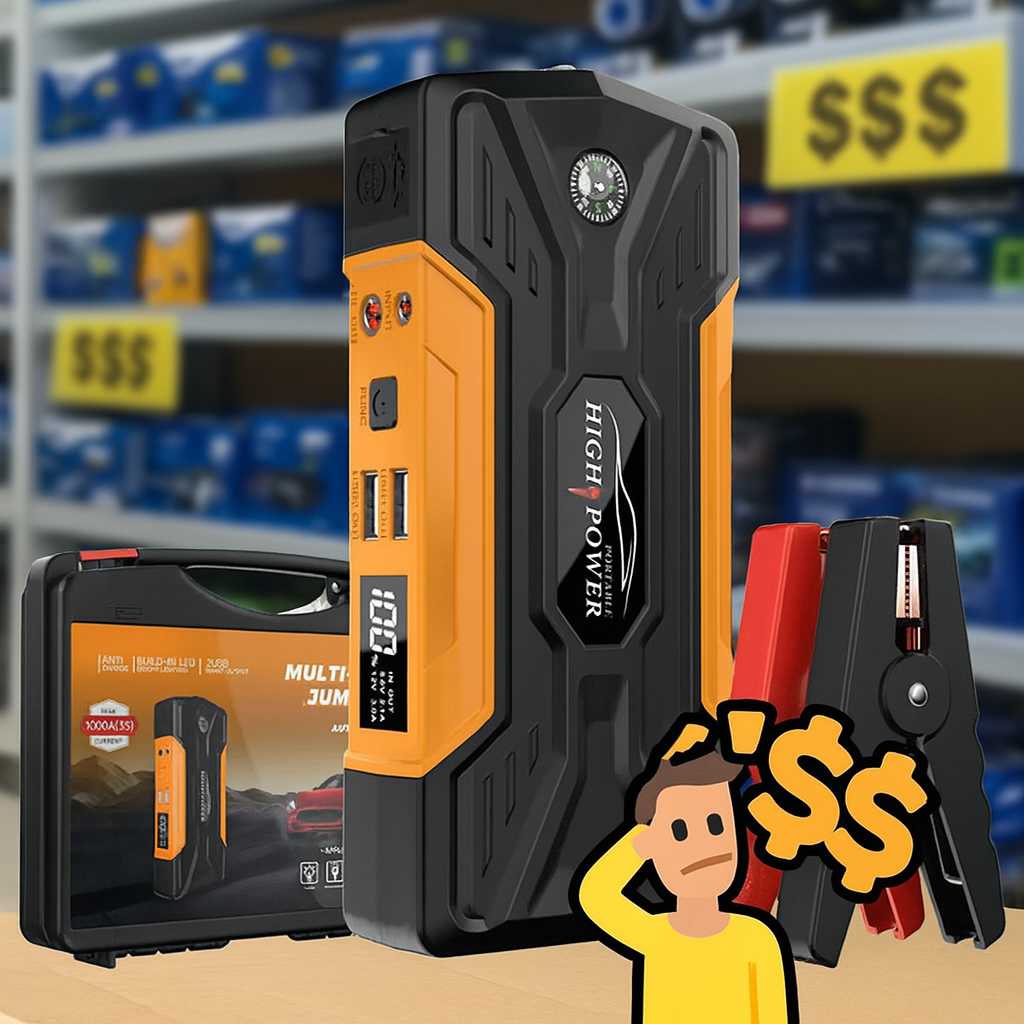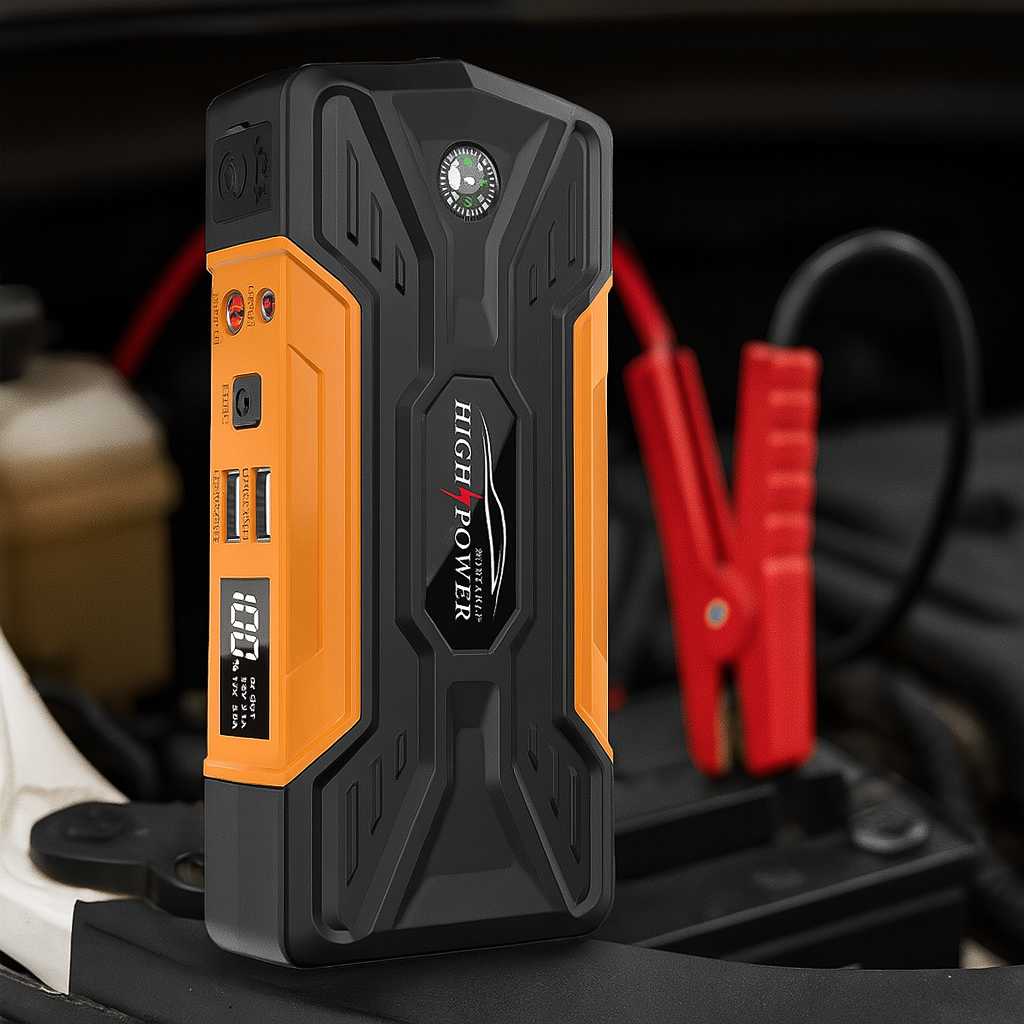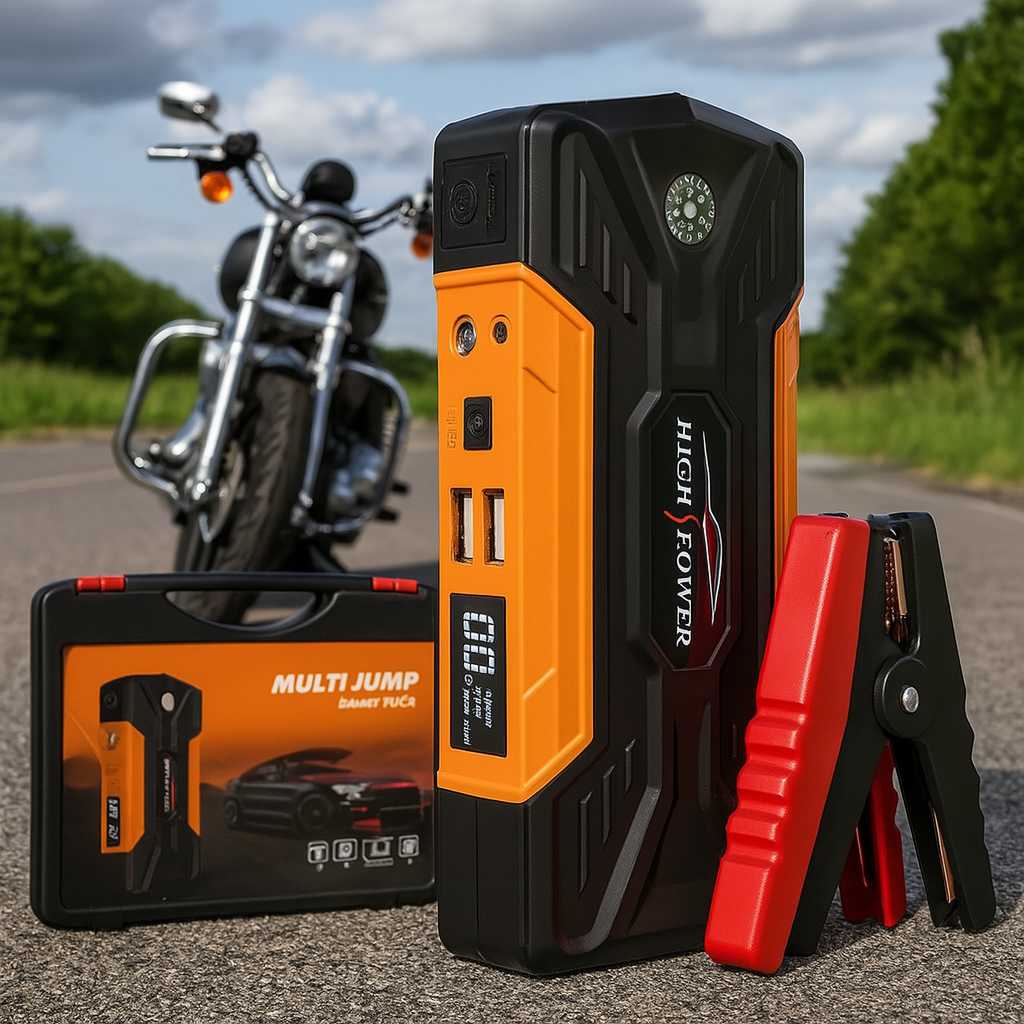5 Surprising Truths About How Long to Leave a Portable Jump Starter On
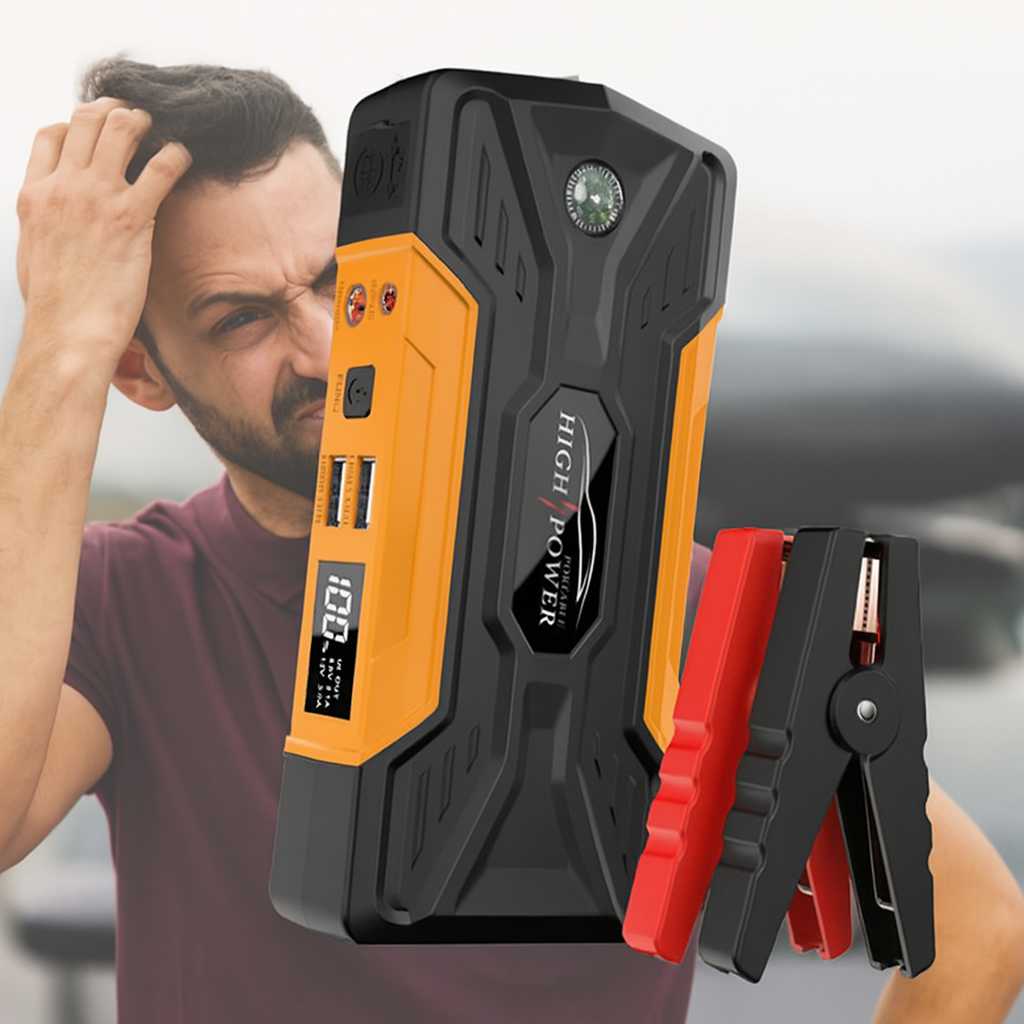
5 Surprising Truths About How Long to Leave a Portable Jump Starter On
Let’s set the scene: you’re late for work, your coffee is already cold, and as if scripted by fate—your car won’t start. You heroically pull out your trusty jump starter, feeling like a roadside wizard about to resurrect your ride. But then a very normal, very important question hits you:
How long to leave a portable jump starter on?
You don’t want to underdo it and have the engine sputter. But you also don’t want to overdo it and end up melting cables or cooking your jump starter like a Sunday roast.
Don’t worry, we’ve got you. In this blog, we’re exploring everything you need to know about how long to leave a portable jump starter on, and we promise it’s way more exciting than it sounds. (This isn’t your average “battery blog.”)
We’ll give you pro tips, time-saving hacks, and even bust a few myths along the way. Buckle up.
And hey—if you’re in the market for a portable jump starter that works fast, charges safely, and can be delivered right here in Malta, check out our model at 4HomeMalta. It’s powerful, user-friendly, and backed by great service.
Let’s fire this thing up.
1. The Quick Answer: How Long to Leave a Portable Jump Starter On
Alright, let’s start with the straight-up answer.
Generally, you should leave a portable jump starter connected for about 30 seconds to 1 minute.
Yes—really. That’s it.
That short burst is all it takes for most modern lithium jump starters to send the initial jolt your battery needs to crank the engine. If your car doesn’t start in that time frame, it’s not a “try again for 10 minutes” kind of situation—it’s time to reassess (we’ll get to that later).
Here’s the typical flow:
-
Connect clamps correctly (red to positive, black to negative).
-
Power on the jump starter.
-
Wait 30–60 seconds.
-
Turn the ignition key.
-
If it starts, disconnect in reverse order.
The key is to start your car while the jump starter is actively on and connected—not to leave it hanging there for minutes like it’s on a slow brew.
2. Why Timing Matters: The Science Behind the Surge | How Long to Leave a Portable Jump Starter On
When it comes to jump starting, it’s not about how long the device is connected—it’s about how much current it can deliver quickly.
🔋 It’s All About Amps, Baby
Portable jump starters work by delivering a quick burst of amperage to kick-start your car’s engine. This jolt doesn’t need minutes to build up—it’s instant.
If you’re wondering whether leaving it on longer helps “charge” your car battery—sorry, it doesn’t work like that. That’s a job for a battery charger, not a jump starter.
Think of your jump starter as a superhero making a dramatic entrance. In, save the day, out.
⚡ But What If the Car Doesn’t Start?
If the car doesn’t start after 1–2 attempts:
-
Let the jump starter rest for 1–2 minutes.
-
Check your connections—are the clamps tight and secure?
-
Try again.
Still no dice after two tries? Either:
-
The battery is too far gone.
-
The starter’s output is too low for your engine.
-
Or something else (like a blown fuse or alternator issue) is causing a bigger problem.
3. How Long to Leave a Portable Jump Starter On: Different Situations
Different circumstances = slightly different timing rules. Let’s break it down:
🚘
For Cars in Average Condition
-
Time needed: 30–60 seconds
-
Typical success rate: 1st or 2nd attempt
Perfect for modern vehicles with healthy, though slightly drained, batteries. These are your “Oops, I left the lights on overnight” moments.
🚙
For SUVs, Diesels, or Trucks
-
Time needed: 60–90 seconds
-
Best practice: Use a high-amp jump starter rated for bigger engines (1000A+)
These engines need more current, and sometimes a slightly longer pre-crank connection helps—but even then, you shouldn’t leave the starter on for more than 2 minutes continuously.
🧊
In Cold Weather Conditions
-
Time needed: Up to 90 seconds
-
Extra tip: Crank the key during the initial surge—don’t wait too long.
Cold batteries are sluggish, but again, prolonged attachment won’t magically warm the battery. If it doesn’t start within 2 minutes, try warming up the jump starter itself and reattempting.
🏍️
For Motorcycles or Smaller Vehicles
-
Time needed: 10–20 seconds
-
Amp range: 200A–400A
Motorcycles usually start up quickly, and leaving the jump starter on too long can overwhelm the smaller battery.
4. Can You Leave a Jump Starter Connected Too Long? | How Long to Leave a Portable Jump Starter On
Ah yes, the classic “if a little is good, more must be better” logic. Sorry—not in this case.
Leaving a jump starter connected for too long (especially while it’s powered on) can:
-
🔥 Overheat the cables or terminals
-
⚠️ Stress the internal circuitry
-
❌ Drain the starter’s own battery
-
⚡ Cause electrical surges if not disconnected quickly after starting
Modern units often have built-in safety features, like auto-shutoff, reverse polarity protection, and thermal sensors. But not all do—especially bargain models you find in discount bins.
Want to skip the guessing? Our model at 4HomeMalta has built-in protections, smart indicators, and enough juice to jump most vehicles without breaking a sweat.
🧠 Pro Tips to Maximize Your Jump Starter’s Lifespan | How Long to Leave a Portable Jump Starter On
Now that you know how long to leave a portable jump starter on, here’s how to get the most out of it long-term:
🔋 Keep It Charged | How Long to Leave a Portable Jump Starter On
Even the best jump starter is just a pretty paperweight when it’s dead.
Charge it every 2–3 months, and always after use.
🌡️ Avoid Extreme Temps | How Long to Leave a Portable Jump Starter On
Don’t leave it roasting on the dashboard or buried in the freezing trunk. Store it somewhere dry, cool, and shaded when not in use.
🚫 Don’t Jump Twice in a Row Without Rest
Give your starter a minute or two to cool off between attempts. Otherwise, you risk overheating the internal components.
🔄 Practice Before You Need It
Yes, actually try it out before your next car emergency. You’ll feel way more confident when the real moment hits.
💼 Store It With Your Emergency Kit
Nothing’s worse than knowing you have a jump starter… but it’s buried under your gym bag and a half-deflated football. Keep it accessible.
5. Common Mistakes to Avoid When Using a Portable Jump Starter
Knowing how long to leave a portable jump starter on is just the start. If you fumble the rest of the process, you could end up damaging your jump starter—or worse, your car.
Here’s what NOT to do:
❌ Leaving It Connected After the Car Starts | How Long to Leave a Portable Jump Starter On
This one’s huge. Once your engine is running, disconnect the jump starter immediately—you don’t want your car’s alternator pumping power back into your jump starter.
Why? Because jump starters aren’t meant to be chargers—they’re boosters. Leaving it connected can overcharge the internal battery or create voltage feedback that leads to damage.
❌ Using It on a Totally Dead Battery (Without Checking)
If your car battery is completely dead, a portable jump starter may not work—especially if it lacks a “boost” mode. Many models require the battery to hold at least some charge to activate properly.
That’s why the “clicking sound” from the engine is helpful—it means your battery isn’t totally dead, and a jump should work.
Still unsure? We’re happy to help you choose a jump starter that fits your vehicle’s needs.
❌ Mixing Up Clamps | How Long to Leave a Portable Jump Starter On
We shouldn’t have to say this… but here we are.
Red = Positive.
Black = Negative.
If you reverse these, modern units might beep at you or refuse to start. Older or cheaper units? They might fry themselves—or your battery. Choose models with reverse polarity protection (ours does this automatically).
❌ Holding the Starter Button Too Long
If your unit has a “boost” or “on” button, don’t press and hold it indefinitely. Most devices are programmed for brief output windows. Holding it too long doesn’t improve your chances—it just drains the starter or overheats the cables.
6. Troubleshooting: When the Jump Starter Isn’t Working | How Long to Leave a Portable Jump Starter On
Even when you’ve done everything right, sometimes the car just won’t budge. Here’s what to do.
✅ Check the Charge Level
First and foremost—is the jump starter itself fully charged?
A device at 15% battery is unlikely to jump a car. Top it off before each use. It only takes one stranded day to make that habit stick forever.
✅ Inspect the Clamps | How Long to Leave a Portable Jump Starter On
-
Are they tight and clean?
-
Are the metal teeth making full contact with the battery terminals?
-
Any corrosion or rust present?
Clean terminals equal better conductivity, and that’s the name of the jump-starting game.
✅ Wait 30–60 Seconds and Try Again | How Long to Leave a Portable Jump Starter On
As covered earlier, your battery may just need a few moments of voltage stability before it cranks. Give it a short rest, then go for round two.
✅ Still Stuck? It Might Not Be the Battery | How Long to Leave a Portable Jump Starter On
If nothing works—no clicks, no dashboard lights—your issue could be:
-
A blown fuse
-
Starter motor failure
-
Faulty alternator
-
Or even something fun like a loose ignition wire
A jump starter won’t fix mechanical issues, but it can help rule out the battery as the cause.
7. Myths About Jump Starter Timing (Busted!)
It’s time to clear up a few urban legends floating around garages and Facebook groups alike.
🧃
Myth: “Leave the jump starter on for 5–10 minutes to charge the car battery.”
Nope.
Jump starters don’t charge batteries—they boost them.
They give you enough current to start the car, not to restore your battery to full health.
If you need to charge the battery, use an actual charger or drive the car for 20–30 minutes after starting it.
🧠
Myth: “You’ll damage the battery if you don’t wait before cranking.”
Actually, most jump starters are designed for immediate use.
Once connected, you can crank after 10–30 seconds max. No need to meditate on your life choices first.
🔌
Myth: “The longer it’s connected, the better the result.”
More time doesn’t equal more power.
If it hasn’t worked after two attempts and two minutes, you’re likely dealing with something beyond just a dead battery.
8. Final Verdict: How Long to Leave a Portable Jump Starter On
Let’s wrap it all up in a quick, shareable checklist:
✅
How long to leave a portable jump starter on?
30 to 60 seconds is usually all it takes.
✅
What if the car doesn’t start?
Double-check the clamps, wait 1 minute, then try again.
If it still doesn’t work, reassess the starter, battery condition, or car’s electrical system.
✅
Can I leave it connected after the car starts?
No. Disconnect immediately to avoid damage.
✅
Do I need to “charge” the battery with the jump starter?
Nope. It’s a one-shot power boost, not a long-term solution.
✅
Where can I buy a reliable jump starter in Malta?
Oh hey—glad you asked!
🛒 Buy Smart. Buy Local. Buy From 4HomeMalta | How Long to Leave a Portable Jump Starter On
We stock high-quality, fast-charging, safe-to-use jump starters at competitive prices. When you order from us, you get:
-
Expert support and honest advice
-
Fast shipping in Malta
-
Portable jump starters that double as USB power banks
-
Flashlights, reverse polarity protection, boost mode & more
👉 Click here to check out our bestselling model—perfect for cars, motorbikes, and even your portable projector malta.
(Yes, we tested it on a projector. And yes, it works. You’re welcome.)
📞 Still Have Questions? | How Long to Leave a Portable Jump Starter On
We get it—jump starting isn’t everyone’s idea of fun. But we’re here to make it easy.
👉 Reach out to us here and we’ll help you:
-
Pick the right product
-
Understand how to use it safely
-
Troubleshoot anything weird
We love jump starters more than most people love coffee. (Okay, maybe not more… but definitely close.)
📚 Bonus Geek Stuff: Want to Read the Science? | How Long to Leave a Portable Jump Starter On
If you’re still curious about the mechanics behind jump starts, we recommend checking out the official Jump Start (Vehicle) Wikipedia page.
Just don’t go building your own with toaster parts, okay?

